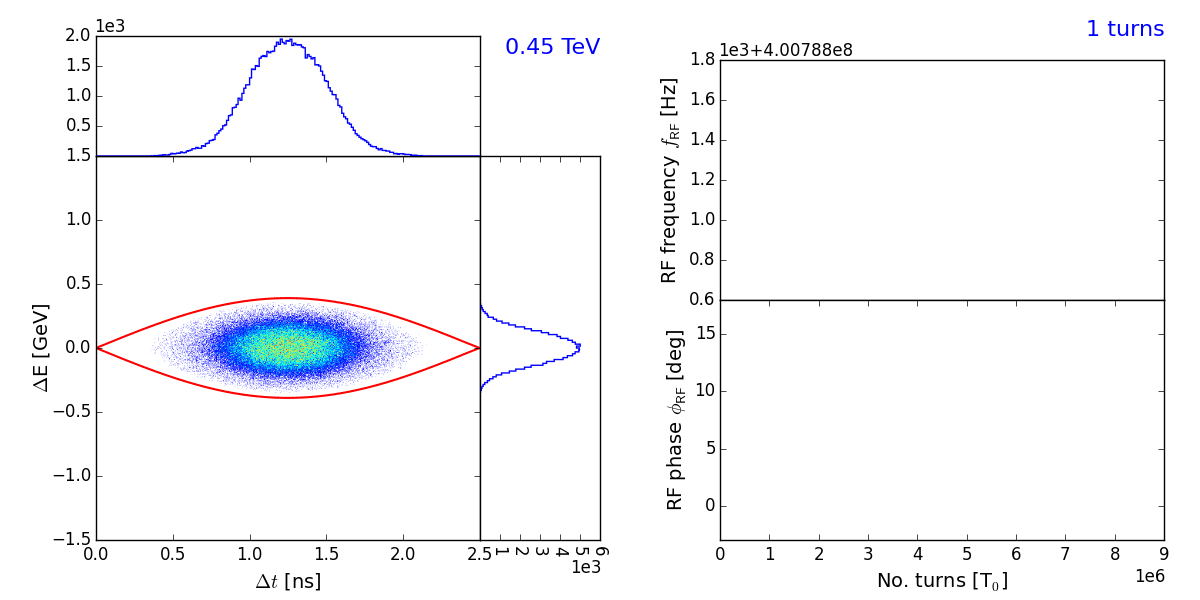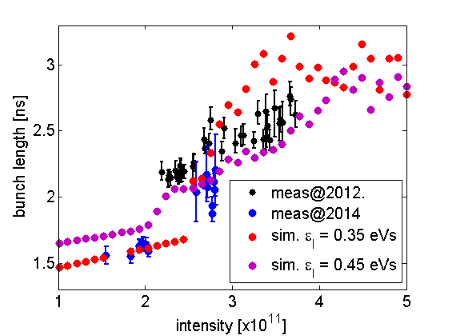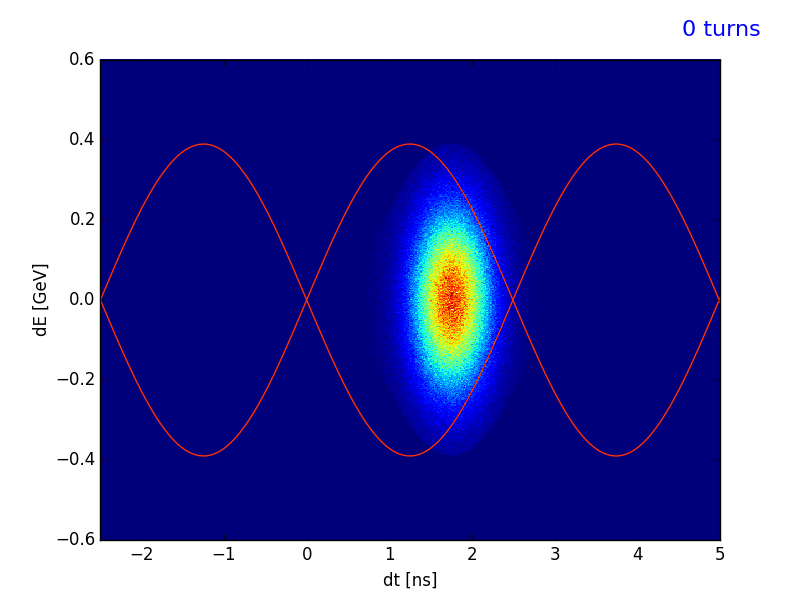LHC controlled longitudinal emittance blow-up during the ramp
In the LHC, maintaining a constant stability threshold requires that the longitudinal emittance is increased as the square-root of energy during the acceleration ramp. This is done by the controlled injection of RF phase noise with a bandwidth that targets the bunch core. The phase noise can either be injected through the phase loop or directly through the cavity; in both cases, a feedback on the noise amplitude is active to maintain a constant FWHM bunch length. Simulations reveal that the bunch core becomes rounder during the process, while the tail population remains inside a certain area.

Longitudinal phase space, RF frequency and phase during acceleration. The phase loop cancels part of the injected RF noise through corrections on the RF frequency. The synchronisation loop keeps the RF frequency close to the programmed value.
SPS impedance identification
Injecting long (25 ns) bunches into the SPS with RF off and analysing the spectrum of the debunching bunch showed the presence of a 1.4 GHz high-frequency impedance in the ring. The impedance of SPS vacuum flanges has been estimated via measurements and electromagnetic simulations subsequently. Simulations with BLonD demonstrated that the bunch lengthening observed at SPS flat top cannot be explained purely by potential-well distortion, but is due to microwave instability caused by the flange impedance.

Bunch lengthening due to microwave instability. Comparison of measurement and simulation results in the Q20 optics.
PS-to-SPS transfer
In the PS, the LHC-type 25 ns beam is created through a series of RF manipulations. Right after the injection of 4+2 bunches from the PSB, a triple splitting is performed and the bunches are accelerated subsequently. At flat top, each bunch is twice split in two, resulting in 72 bunches in total. Finally, an adiabatic bunch shortening and a bunch rotation are performed in order to obtain bunches that are short enough to be injected into the 200 MHz buckets of the SPS. Four RF systems are used to perform these manipulations: 10 MHz (h21), 20 MHz (h42), 40 MHz (h84), and 80 MHz (h168).

Bunch-to-bucket transfer between PS and SPS for the LHC-type 25 ns beam. After two double splittings and a bunch rotation at PS flat top, the bunch is injected and later accelerated in the SPS.
Beam feedbacks
The BLonD code disposes of various beam and cavity feedbacks that can be enabled by the user. An example is the beam phase loop correcting an injection error (left). The beam phase loop will displace the bucket to correct for the initial error in phase and/or energy. Combined with the synchronisation loop (right), the bucket and the RF phase eventually get pulled back to the reference.


Correction of injection errors with beam phase loop only (left) and with combined beam phase and synchronisation loops (right).
